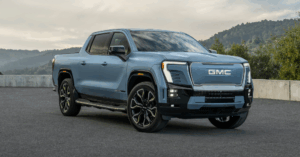
A recent pause in U.S. trade tariffs made headlines for temporarily lowering duties on goods from dozens of countries. But there’s a catch: the 25% tariffs on imported cars and auto parts are still in full effect for now. That’s a development many drivers and industry professionals can’t afford to ignore.
From Michigan’s auto factories to the independent auto repair shop on your neighborhood corner, the effects of these tariffs could ripple through pricing, parts availability, and customer costs. Here’s what car owners need to know.
What Stayed and What Paused
Earlier this month, President Trump announced a 90-day freeze on many of the new reciprocal tariffs his administration had introduced. This pause reduces import taxes on goods from over 75 countries to 10%, which is a temporary relief aimed at encouraging trade negotiations.
But auto sector tariffs weren’t part of the deal. The administration confirmed that the 25% tariff on foreign vehicles and components from late March remains in place, alongside similar duties on imported steel and aluminum.
Parts Prices Could Be the First to Rise
Modern vehicles depend on globally sourced parts. Even American-made cars are built using components from multiple countries, many of which now face steeper import fees. From brake pads and fuel pumps to electrical sensors and bumpers, prices could soon increase across the board.
For the average auto repair shop, that means higher wholesale costs. Unfortunately, those costs are often passed along to the customer.
If you’ve been thinking about putting off a repair, now might not be the time. Labor charges may stay the same, but parts pricing could spike in the coming months as suppliers adjust.
Auto Shops Feel the Supply Chain Squeeze
Beyond pricing, availability is another concern. Increased tariffs could disrupt the flow of specialty components and create bottlenecks in distribution. That’s especially critical for independent shops and regional chains that don’t have the inventory scale of national dealerships.
Waiting a few extra days for a part might sound minor, but for a repair shop juggling multiple vehicles and tight schedules, delays can throw off business. It’s also frustrating for drivers who rely on fast service for work, school, and family obligations.
Auto policy experts say uncertainty around international trade only adds to the problem. If automakers slow production to compensate for rising costs or supply disruptions, that could trickle down to dealerships, mechanics, and consumers alike.
What Drivers Can Do
If you’re facing repairs in the near future, get quotes and estimates now. Talk to your trusted auto repair shop about potential changes in part pricing or service timing. Staying proactive can help you avoid surprises down the road.
For those in the market for a new or used vehicle, ask your dealer how ongoing tariffs could impact pricing or availability in the months ahead. The more you know, the better equipped you’ll be to make smart decisions in an uncertain market.
This post may contain affiliate links. Meaning a commission is given should you decide to make a purchase through these links, at no cost to you. All products shown are researched and tested to give an accurate review for you.








